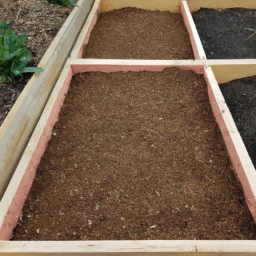How To Layer A Raised Garden Bed
How To Layer A Raised Garden Bed
How To Layer A Raised Garden Bed
What Is A Raised Garden Bed?
A raised garden bed is a type of garden that is constructed aboveground in order to promote good drainage and improved soil quality. This type of garden is both aesthetically pleasing and practical, and can be made from a variety of materials including wood, metal, stone, or plastic. This type of garden is generally used for growing vegetables, fruits, herbs, and flowers. As a result, it can provide a lush environment for any type of garden.
Benefits Of A Raised Garden Bed
Though raised garden beds are generally quite robust and long lasting, the most notable benefit of using this type of garden is its productivity. Due to the increased soil quality and depth, plants can receive richer, more nutritious soil quicker than in traditional gardens. Furthermore, since the garden is placed above ground, pests, weeds, and diseases are far less likely to affect the vegetation.
Laying A Raised Garden Bed
When it comes to laying a raised garden bed, there are a few crucial steps that must be taken before planting. First, the area must be measured and the desired size and shape must be determined. Then, the type of material to be used must be decided upon. Once those two steps have been completed, the garden can then be constructed.
Step 1: Measuring
The first step to laying a raised garden bed is to measure the desired area for the bed. This is important because it will determine the size, shape, and placement of the bed. It's important to take into account any obstacles that may affect the bed such as existing structures, fences, or trees. Once the area has been measured, the size and shape of the bed can then be determined.
Step 2: Choosing Materials
Once the size and shape of the bed have been determined, the type of material used to construct the bed must be chosen. There are a variety of materials that can be used such as wood, metal, stone, or plastic. Each has its own advantages and disadvantages, so it's important to choose the one that best suits the desired needs.
Step 3: Constructing The Bed
After the materials have been chosen, the bed can then be constructed. This generally involves placing the chosen material in the desired area, assembling it, and filling it with soil. It's important to make sure that the bed is structurally sound and that all pieces are firmly attached together. Once the bed is completed, it's then time to start planting.
Layering A Raised Garden Bed
When it comes to layering a raised garden bed, it's important to start with a sturdy foundation. Generally, this will involve a layer of good quality soil that is then followed by other organic materials. These materials can range from compost, to manure, to kitchen scraps. After the foundation has been established, a layer of gravel or river rocks may be added to assist with drainage.
Mixing Soils & Materials
Once the foundation and drainage layer have been established, the soil can then be mixed. This is a process that involves mixing different types of soil to create a rich organic mix that is ideal for plant growth. Generally, this mixture will include a combination of sand, silt, clay, and other organic matter. After the mix has been prepared, it can be added to the bed and the process will be complete.
Planting & Maintenance
Once the bed has been properly constructed and layered, it will then be ready for planting. It's important to research the types of plants best suited for specific soil types, sunlight, and watering schedules. After planting, regular maintenance is necessary. This includes watering, weeding, and fertilizing as needed.
Insights
Constructing a raised garden bed is a great way to create a beautiful and productive garden. By taking the time to measure, choose materials, and layer the bed, homeowners can ensure the bed is properly established for optimal growth. With the right mix of soil and materials, the garden bed can provide an ideal environment for any type of garden.

Previous Page
Next Page
